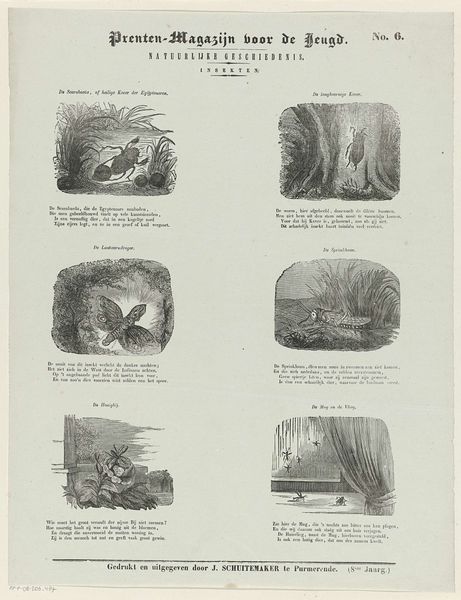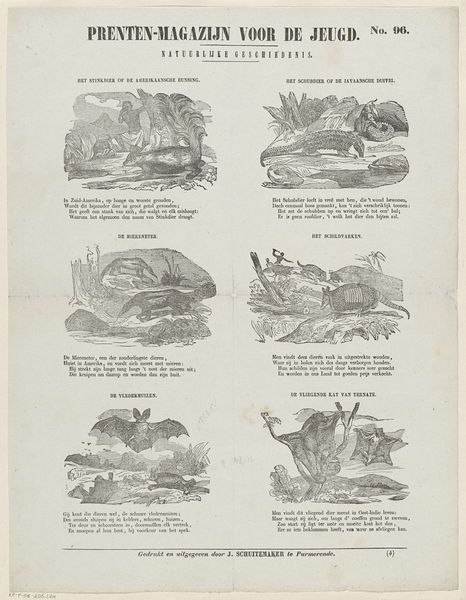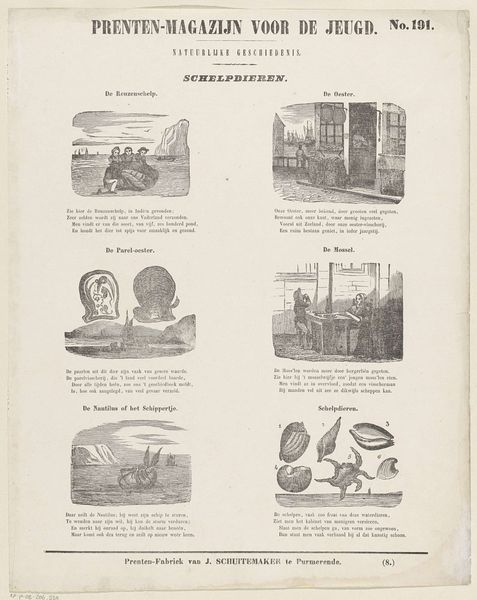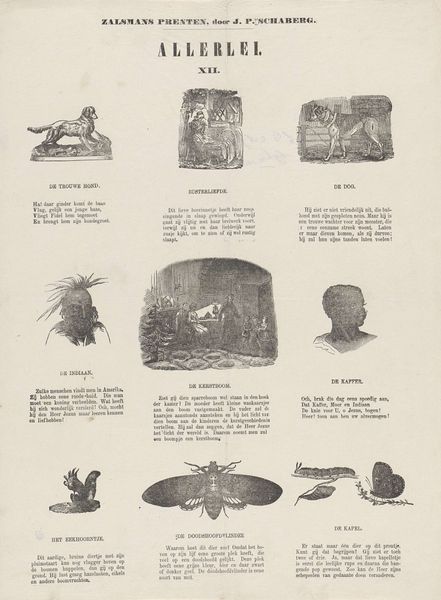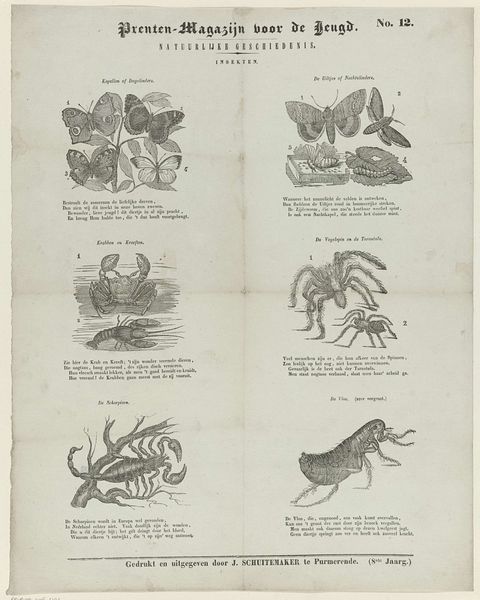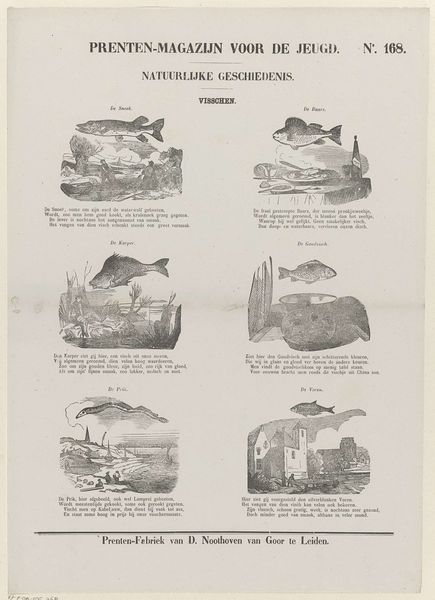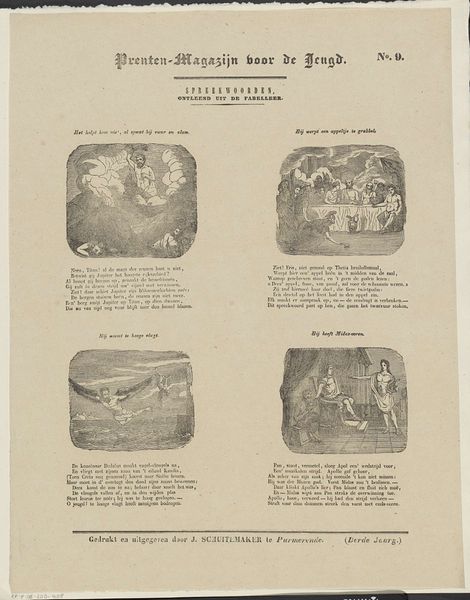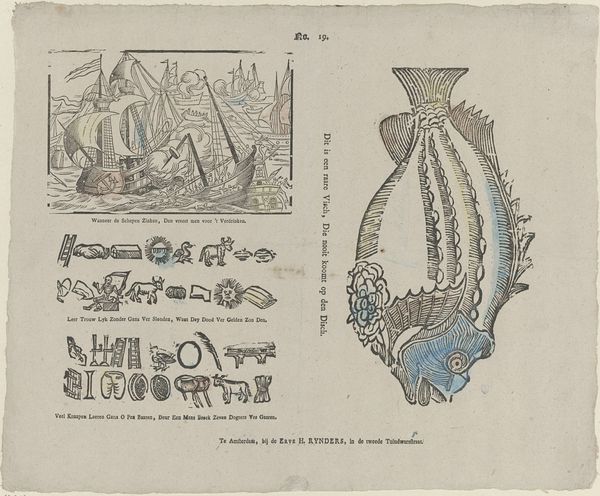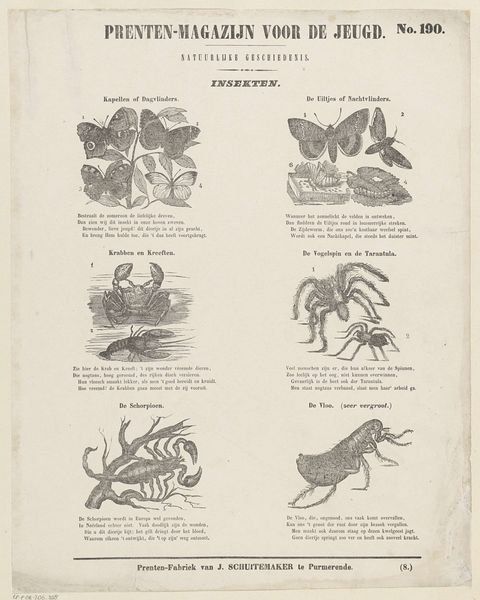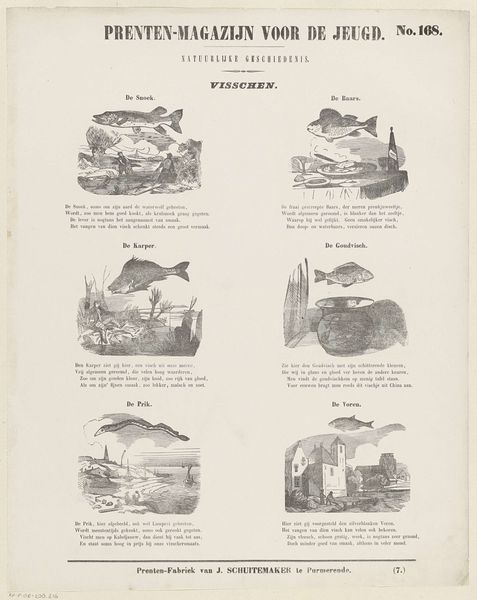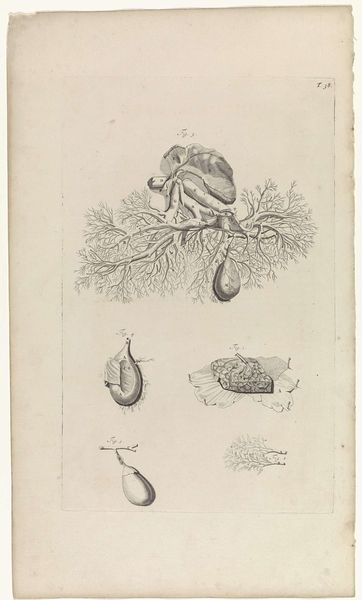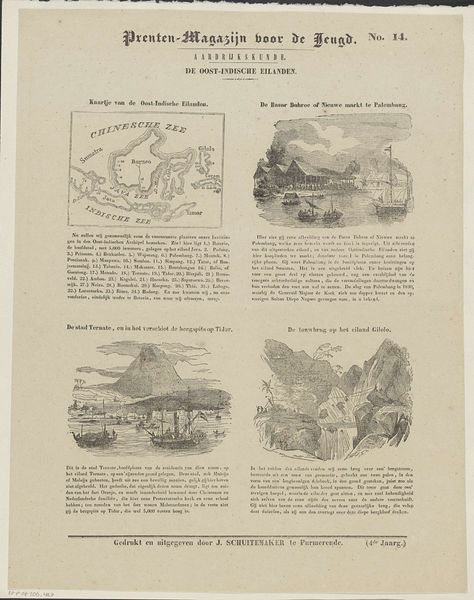
print, engraving
#
aged paper
# print
#
old engraving style
#
sketch book
#
personal sketchbook
#
idea generation sketch
#
sketchwork
#
journal
#
sketchbook drawing
#
storyboard and sketchbook work
#
academic-art
#
sketchbook art
#
engraving
Dimensions: height 411 mm, width 319 mm
Copyright: Rijks Museum: Open Domain
Curator: Here we have "De Wormen", or "The Worms," an engraving made around 1850 by Jan Schuitemaker. My initial impression is of something incredibly intricate. Editor: Intricate indeed, but in a clinical, detached way. Look at the tight rendering of these seemingly disparate organisms, the jellyfish, the snail, almost like a catalogue entry. It feels quite… sterile. Curator: And I think that’s key to Schuitemaker’s approach here. Each element is precisely rendered. The very materiality of the engraving enhances the object quality, drawing our attention to line, form, and spatial relationship, making us focus on the stark simplicity of the black ink on aged paper. Editor: Yet, look closer, these are labeled diagrams within the frame of a children's magazine; there's a production history here. This wasn't meant to be high art but, instead, mass-produced knowledge dissemination—intended for a specific type of consumption. One could even study paper qualities, printing methods to investigate Schuitemaker’s shop, distribution channels. Curator: I concede your point, of course, but do not mistake that with aesthetic elements—consider the jellyfish and the seaweed. Note the visual rhythm. It is almost mathematical; there are symbolic connotations inherent in its stark presentation style. What greater theme does that evoke? I suspect Schuitemaker may be reflecting deeper notions through basic natural depictions, of structure versus function within its compositions. Editor: Agreed, structure dominates here; yet one can find evidence on material limitations: lines, cross-hatching effects. Labor considerations inevitably shape what we think about Schuitemaker’s approach overall; mass education required shortcuts and creative problem-solving, ultimately shaping the image. Curator: We could explore Schuitemaker’s strategic placement; but what I gather is an aesthetic, visual experience aimed for an intelligent and enlightened youth. Editor: Yes—however this print asks a question—knowledge made consumable as commodities... what becomes cheapened on production and accessibility in that kind of process? Curator: The piece allows different conceptual insights of the nature and form by employing such elements in harmony to elicit a visual pleasure. Editor: Indeed—mass art's context reveals much within social structures, as means change depending on materials used and cultural influences.
Comments
No comments
Be the first to comment and join the conversation on the ultimate creative platform.
